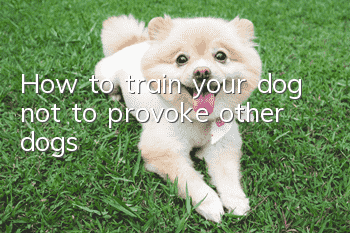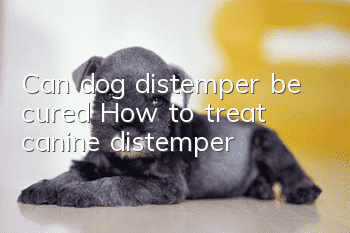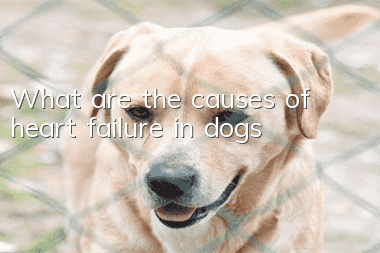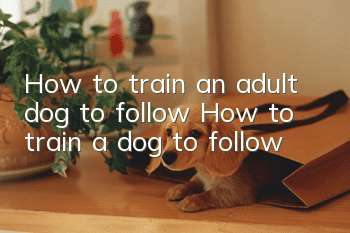How to train your dog not to provoke other dogs

Dogs of the same gender often engage in mutual aggression for dominance, and it is more likely to occur between male dogs than between female dogs, and it mostly occurs in the dog's own territory. Some dogs just Because social interaction is not suitable, and this type of problem is mainly caused by sex hormones, castrating young male dogs can reduce this behavior. Let’s take a look at the methods and steps to train your own dog not to provoke other dogs.
Suitable age: 0 months-2 months
Training goal: Let your dog learn to live in harmony with other dogs instead of attacking each other.
Applicable dog breeds: all dog breeds
Equipment: traction rope | collar | toys | snacks
Level: Middle school (improvement)-social skills training
Training cycle: 10 minutes*7 times
Steps to train a dog “not to provoke other dogs”:
Step one:The method of training is: eye contact. When your dog makes eye contact with your opponent, you should interfere. A raised tail and a glare will indicate that a fight is about to break out.
Step Two: Intense challenge, aggressive behavior caused by total dominance of the dog is difficult to handle. In most cases, fights are preceded by aggressive body postures and yelling. Unless one of the dogs backs down, a fight is inevitable. During a fight, the dog may bite anyone who interferes—including the owner.
Step 3:Between you and other dogs, many dogs will use aggressive behavior to protect their owners. Your dog standing between you and other dogs, tugging on the leash, will reinforce his aggression. The dog may eventually associate the feeling of a tight leash with aggression, whereas the aggressive behavior may not occur if the leash is disconnected.
Step 4: Tight Leash Syndrome. Although you may instinctively shorten the leash when your dog is acting aggressively, this will generally exacerbate the behavior. Forcibly pulling it back will increase its desire to attack. You should turn his head away so that he cannot make eye contact with other dogs.
Step 5: Distract the dog's attention. When you encounter possible aggressive behavior, you should use a toy that the dog likes to attract its attention, and then order it to "sit". You should reward your dog when he behaves well.
Step 6: Carry out recall training in a quiet, distraction-free environment, preferably outdoors. Retrain your dog to come back to you using a long leash or leash while coaxing him in with a toy he likes.
Step 7: Real life scenario, when your dog comes to you after having been trained in a quiet place, when training outdoors, other dogs should be present but keep A certain distance. If your dog does not attack, he should be rewarded. Shorten the distance between the two dogs every day and reward him for being calm.
Things to note when training your dog to “not provoke other dogs”:
1. Maternal aggression: Estrogen can enhance the aggressive behavior of male and female dogs. During the period of increased hormone secretion twice a year, many dogs have an increased desire for possession and are prone to anger. Castration can reduce this type of aggression in female animals, but not all types of aggression. (Note: Castration, although removing the ovaries of female pets is considered a wise move to control unnecessary births and bad behaviors, many people are still opposed to castration of pets - a nearly harmless operation, which is often used in surgical clinics. Yes, castration is just a minor surgery.)
2. Fearful aggression: In many cases, a dog’s obvious aggressive behavior is actually for defense rather than attack. It wants other dogs to leave, not fight with it. Dogs that have not learned to interact normally and have a criminal record are prone to this behavior. Professional assistance is needed to help integrate into the group so that your dog can learn to get along with other dogs instead of attacking them.
3. When training outdoors, other dogs should be present but at a certain distance. If your dog does not attack, he should be rewarded.
- Why do dogs like to eat poop?
- What should you pay attention to when training a border collie?
- How to train a dog not to eat randomly
- What is the best food for newborn puppies to eat?
- How to choose pet cans for dogs and cats?
- What foods should never be given to dogs?
- Neapolitan Mastiff’s Habits, Characteristics and Breeding Methods_Introduction
- The reason behind dogs barking
- What should I do if my Dachshund suffers from skin diseases?
- What are the symptoms of gastric disease in dogs?



